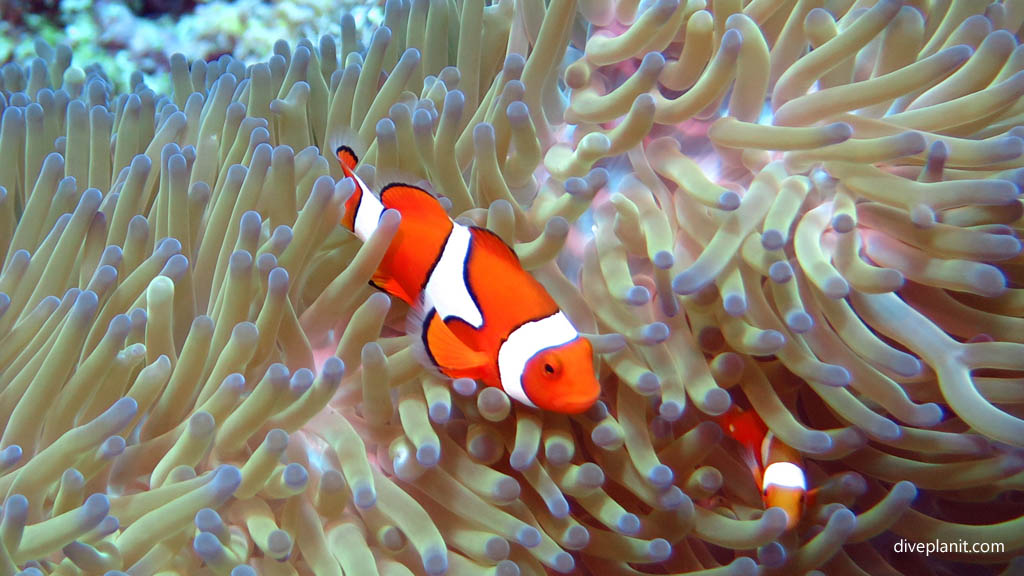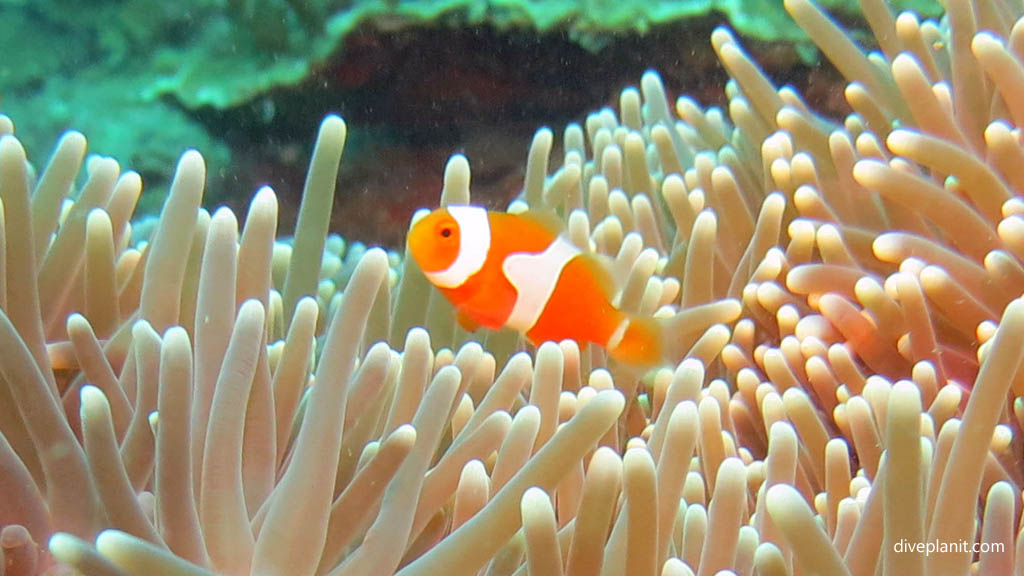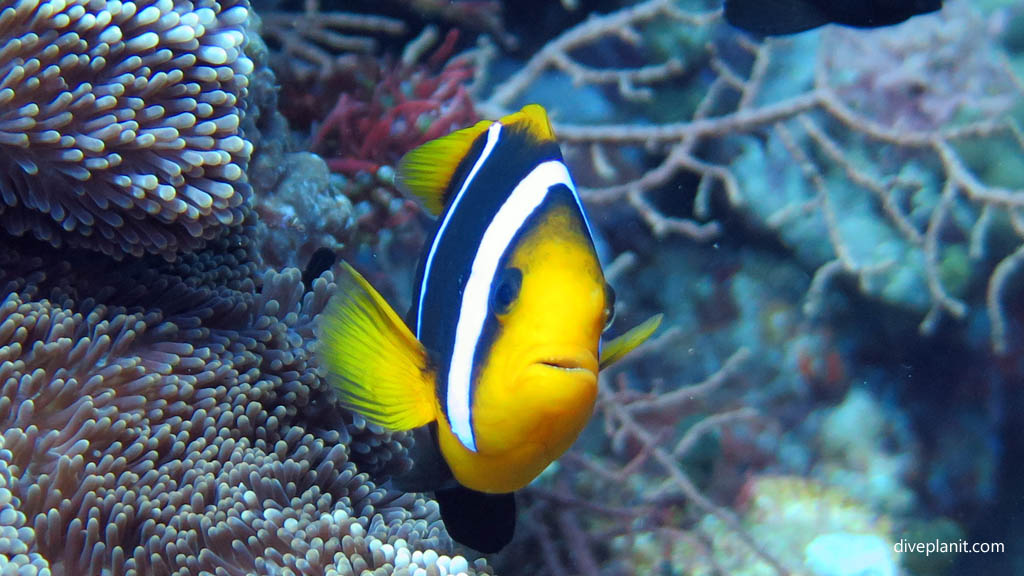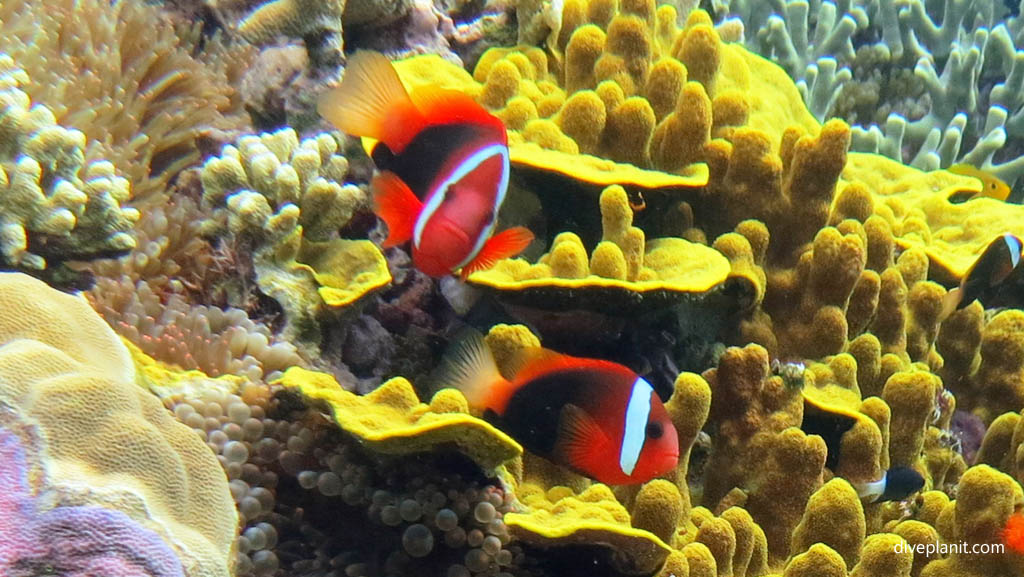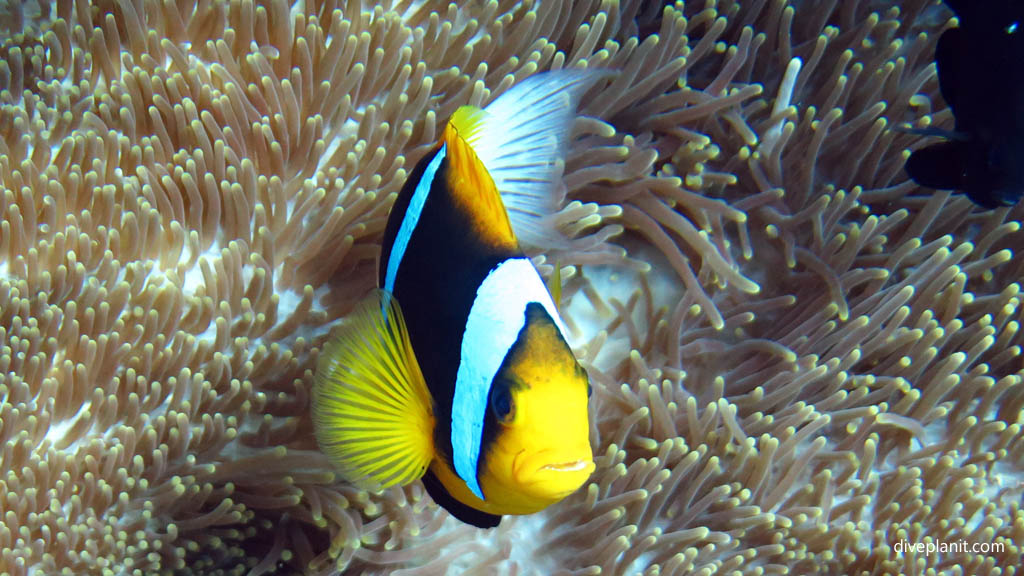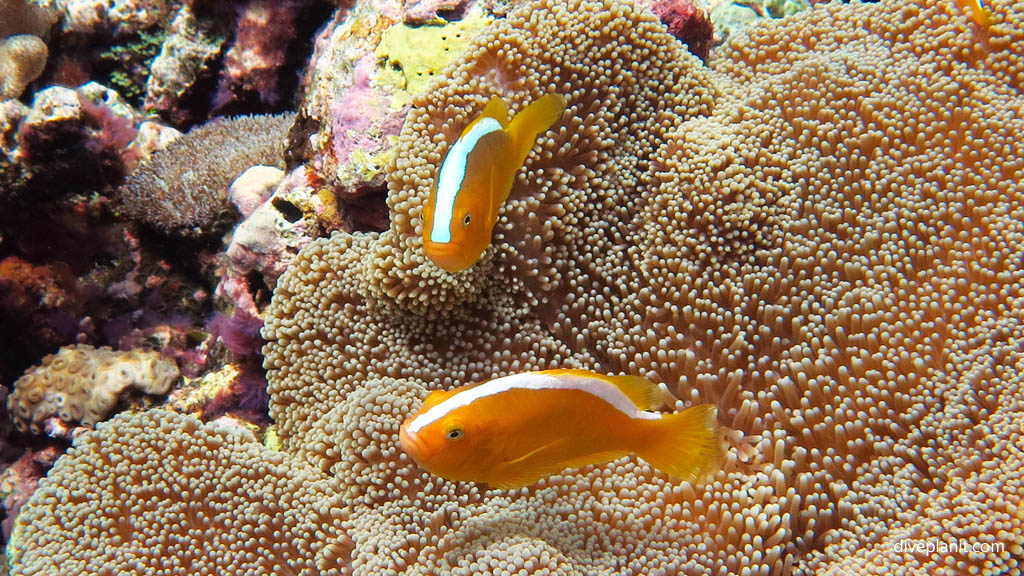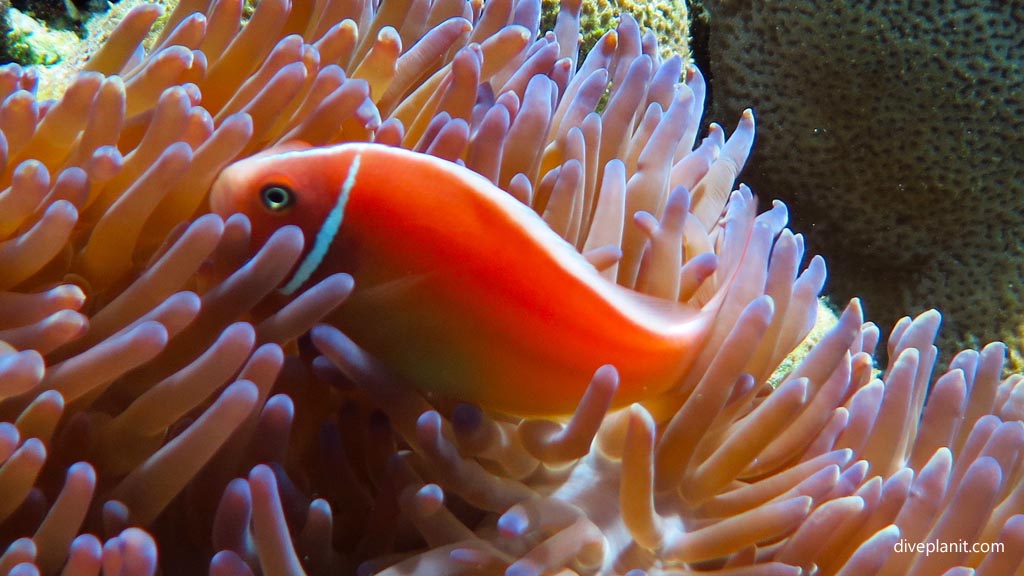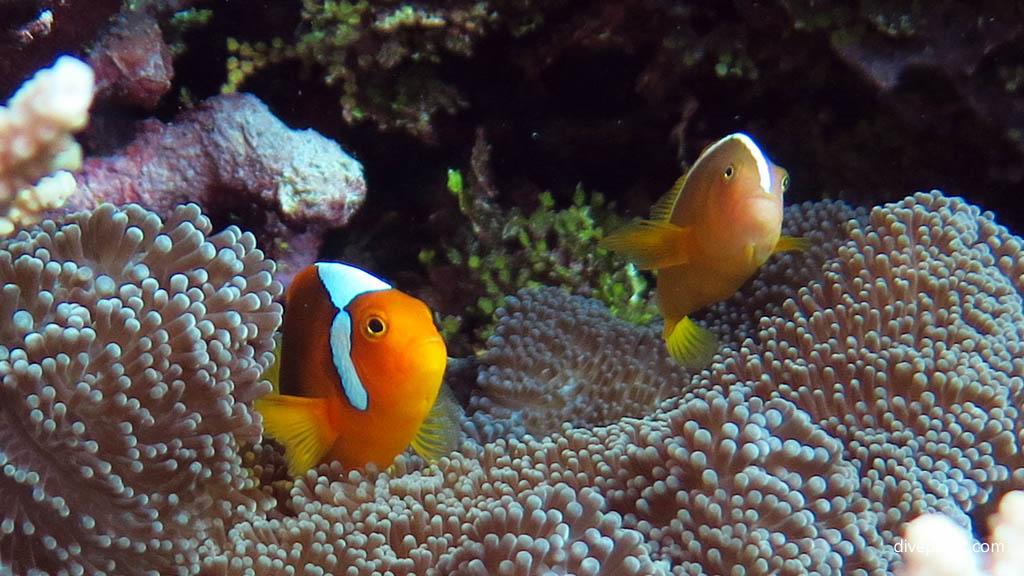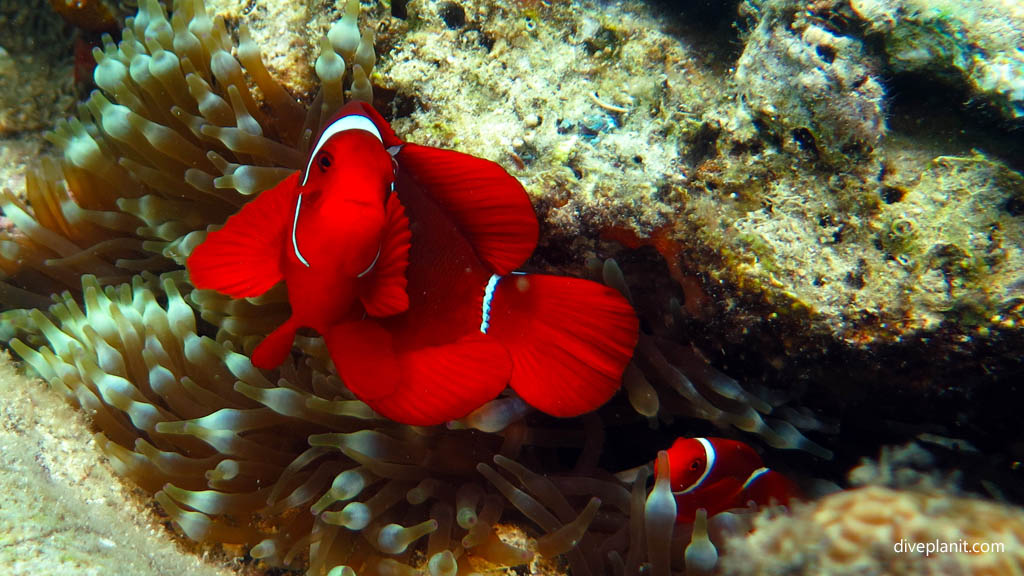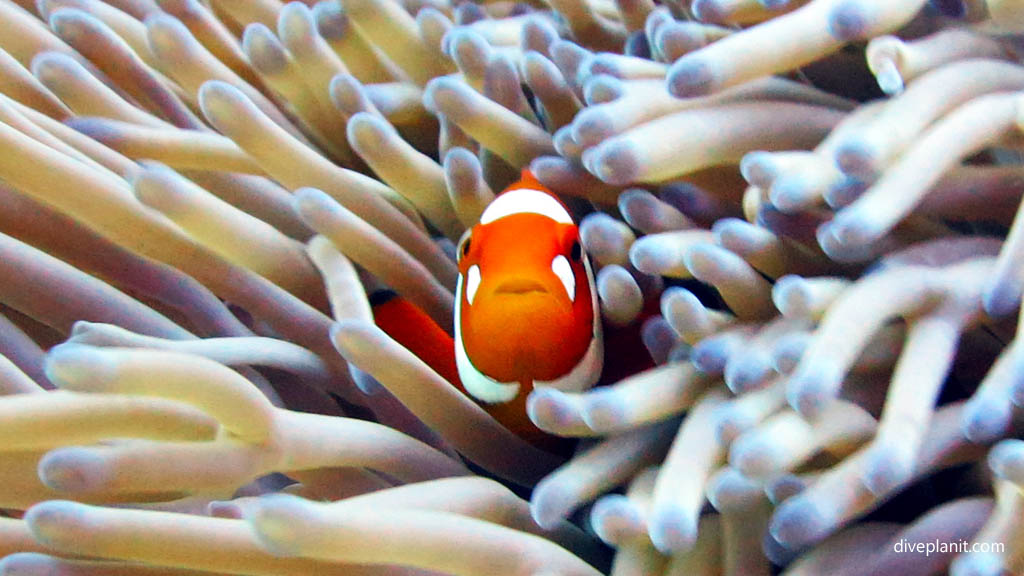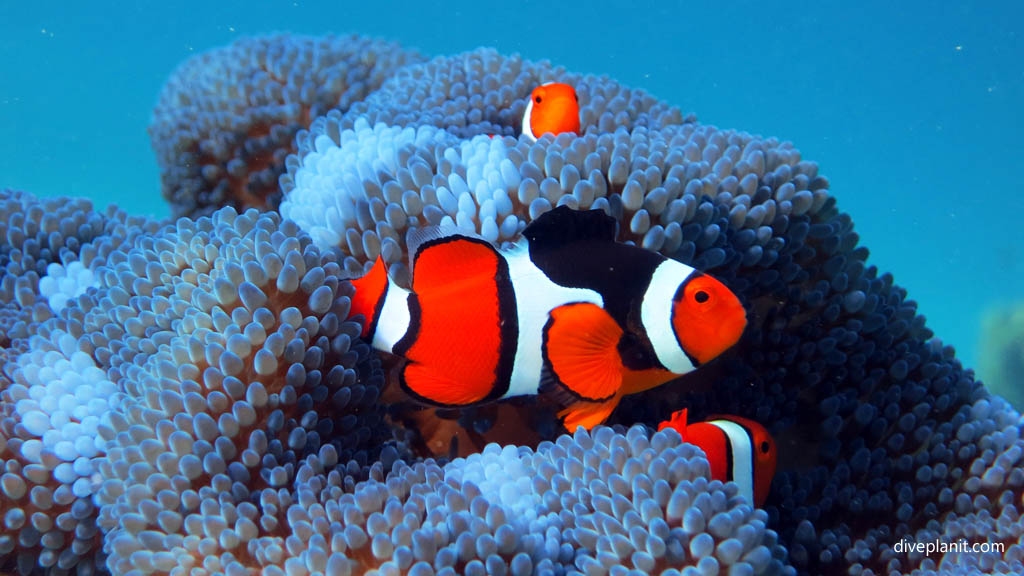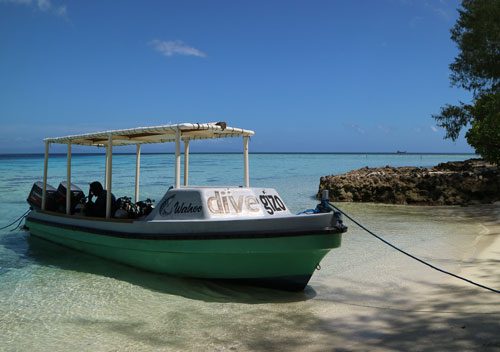Here’s a small sample of some of Nemo’s cousins, all seen on a single dive trip around the Florida and Russell Islands in the Solomons. The diversity of anemone fish – and the different coloured and shaped anemones – in the Solomon Islands is remarkable.
True Clown (Amphiprion percula)
First up is Nemo himself: dressed in the classic Nemo and Marlin colours: white bands with black margins, and classic Nemo and Marlin behaviour with respect to the anemone – cautiously out, quick look … and back again, cautiously out, quick look … and back again, and so on… and so on …
False Clown Anemone (Amphiprion ocellaris)
Next up, very similar to the True Clown, but without the black margins on the white bands, though still some black around the tail. Supposed to stick to the East Indo Asian Pacific whereas the true Nemo is more West Pacific. Maybe he was just visiting?
Clark’s Anemone (Amphiprion clarkii)
Probably the most populous of the Amphiprion clan, certainly one of the more defensive. Dressed in almost aggressive colours: very dark with thick, bold stripes, and yellowtail (caudal fin), he’s a kinda “come and ‘ave a go if you think you’re hard enough” Clown.
Red and Black Anemone (Amphiprion melanopus)
Definitely more red than orange, and distinguishable from the Clark’s by the fact that he only has one stripe. Also, check out the anemone nearby – these guys prefer bulb anemones.
Orange Finned Anemone (Amphiprion chrysopterus)
Not sure why whoever named this one picked Orange Fins as a distinguishing feature – practically every Clownfish has orange fins! Not dissimilar from the Clark’s, but different enough: note the whitetail and the thinner second stripe.
Orange Anemone (Amphiprion sandaracinos)
A single white stripe that extends from the top lip all the way to the tail. Very similar to the more aptly name Skunk (found eastwards of Bali), and the Pacific (found westwards of Fiji). This is the guy in the middle.
Pink Anemone (Amphiprion perideraion)
Similar to sandaracinos, and often not any shade of pink, but in addition to a single thin white stripe that extends from the forehead to the tail, the Pink has a white bar behind the eye. Another small and quite shy cousin.
White Bonnet Anemone (Amphiprion leucokranos)
The only member of the Amphiprion family that belongs to the local surf lifesavers club. Never seen without his white bonnet, always on the lookout for grommet clowns who are out of their depth.
Spinecheek Anemone (Premnas biaculeatus)
Though the spinecheeks also live in anemones – bulb anemones to be exact – they are more like second-cousins. Often there’ll be a big female up to 16 cm who’ll come charging at you, whilst the meek little male, half her size, hides shyly – very clear who wears the pants in that anemone! Both have three white bands, and the female can be anything from scarlet to such a dark red it’s black.
White Cheeked Anemone (Amphiprion cheekiblanci)
I think this is just some cheeky little variant of the False Clown. And actually, human clowns paint red spots on the cheeks of their white faces. So go figure that one.
This shot is most remarkable for the colour of the anemone rather than the Clowns who live there.
The pictures of all these clownfish were taken on a single week-long liveaboard trip on the Solomons Master Liveaboard on a trip through the Florida and Russell Islands in the fabulous Solomon Islands. If you want a taster of what that trip might be like – watch our little video.
As a reference for this article, and indeed generally, Diveplanit refers to the excellent books in the series Reef Fish Identification. In this case, Tropical Pacific. ISBN: 978-1-878348-36-4.

